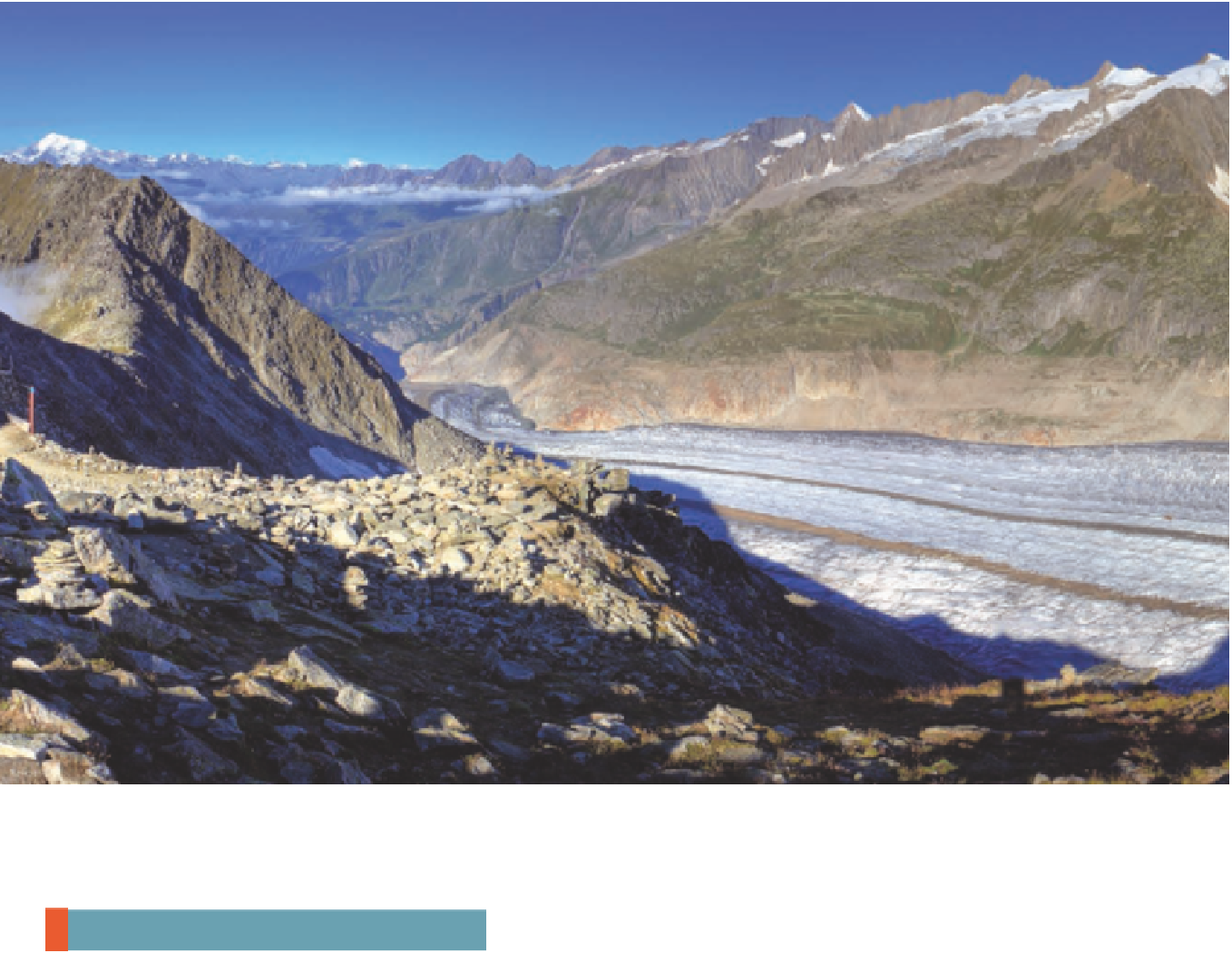Geoscience Reference
In-Depth Information
GLACIAL
GEOMORPHOLOGY:
PROCESSES AND
LANDFORMS
C H A P T E R S E V E N T E E N
The preceding chapter focused on the processes and landforms associated with water that flows across the
surface in rivers and streams. Now it is time to examine the character of flowing
ice
and the landforms that result
from this movement. About 77% of the freshwater on land is stored as ice. Although it may not seem possible, this
form of water moves as a glacier if it becomes sufficiently thick to flow under its own weight. Like streams, these
rivers of ice can also shape the landscape in predictable ways through erosion and deposition.
At the present time, ice covers about 11% of the Earth's land surface. As recently as about 18,000 years ago,
however, glaciers covered about 30% of the landmasses, including much of North America and Europe. As the
climate warmed in the late Pleistocene and early Holocene, these giant ice sheets melted, and new landscapes
created by glacial processes were uncovered. If you live in Canada or any of the northern states such as Wisconsin,
Michigan, New York, Washington, or Illinois, your home may very well be built on deposits left by glaciers.

